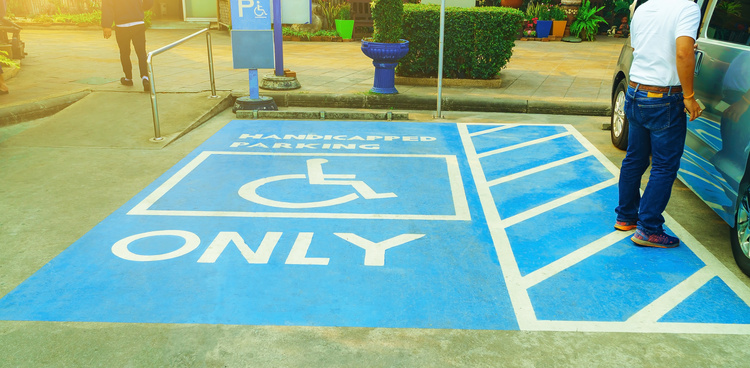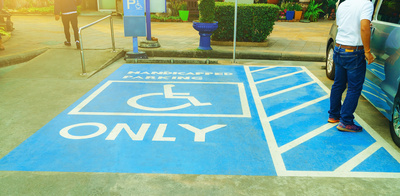
Everything You Need to Know About Disabled Parking Permits
Everything You Need to Know About Disabled Parking Permits - Disabled parking permits are a necessity for many people who suffer from disabilities that prevent them from walking long distances. For some, it can be difficult to walk even a few feet. The permit allows the holder to park closer to their destination, which in turn makes life a little easier.
There are some things to keep in mind when using a disabled parking permit. First and foremost, the permit must be displayed prominently on the vehicle at all times. Secondly, there are different types of handicap placards that differentiate the various types of disabilities. In this article, we’re going to discuss DP permits in-depth, so keep reading.
How to Get a Handicap Parking Placard/Permit
Before diving into the different types of handicap parking permits, let us learn how to obtain a DP permit. DP permits are available to anyone with a mental or physical disability that limits how they carry out their day-to-day activities. People with disabilities that limit their mobility can save frustration, time, and energy by parking in spots near the entrances to businesses and other public facilities.
However, it’s important to understand the qualifying conditions which have been put in place in the different states across the country. A lot of conditions qualify patients to get a handicapped parking permit and thus it’s important to ask your doctor about eligibility.
Each state has its criteria for determining handicapped parking permits eligibility. Normally, for each state, the Department of Motor Vehicles (DMV) runs this program, hence you need to check the process followed in the state you’re currently living in.
Here are the basic steps to follow when applying for a handicapped parking permit:
The first step is to get a handicapped parking application form from the DMV office or online.
Fill in all the required sections and sign the form. At this stage, you’ll need to ask your healthcare provider to fill out and sign the section that certifies disability in the form. It’s important to note that this requirement can be waived in some states if the disability is visible and you appear in person at the DMV.
After you have filled out the form and signed it, the last step is to submit the application and you can do this in person or by mail. After you have submitted the form, the application process begins. The process that follows is straightforward since once the physician has certified your disability, you’ll not need to be tested again. This service is completely free of charge, but you should also note that it’s state-dependent.
Differentiating the Red and Blue Parking Permit
The most common color patterns for parking permits are light blue, blue, and red. However, it’s important to note that even though most states follow similar color patterns, things might be a little different in some states. Basically, there are three different colors of parking permits, and are all assigned in most states.
1. Red Placards
The red placards are temporary permits that are usually offered to people with temporary disabilities. These are used for a temporary time frame of six months and can be renewed if need be. People who can qualify for this kind of permit include pregnant women, a patient who has undergone surgery, and people with fractured bones.
2. Blue Placard
The dark blue placards are offered to people with permanent disabilities. It’s important to note that, even though these placards are offered to people with permanent disabilities, they’re subject to renewal. The renewal period varies from state to state. Spinal cord injury, loss of limb, traumatic brain injury, carpal tunnel syndrome is some of the permanent disabilities which qualify for a blue placard.
3. Light-blue placards
These placards are only for use in “wheelchair users only” parking spaces. The light-blue placards are permanent placards and the renewal varies depending on the state.
Green Disabled Sign: What Does It Mean?
The green placards are rare to spot compared to the other types of DP permits listed above. The green placards are issues to organizations that transport patients with disabilities. Green placards are as important as the rest placards since the passengers also need access to designated parking spaces. These placards are also subject to renewal which varies from state to state.
Conditions That Qualify for a Disabled Parking Permit and Who Can Use These Placards
There are certain conditions that one must have to qualify for a DP permit. They include:
Hearing loss
Vision loss
Asthma
Lung infection
Prostrate and lung cancer
Immune system disorders including Lupus and HIV
Haematological diseases such as Sickle Cell Disease and Chronic Anaemia
Heart disease
Substantially impaired mobility such as the use of a cane, brace, or wheelchair
Loss of both hands or loss of both legs
It’s important to be aware of the conditions that qualify for disability and you should also ask your doctor about your eligibility. The eligible conditions vary from state to state and thus you should confirm with your specific state either in person or online. For example, some states grant handicap parking placards to people who have acute sensitivity to sunlight which causes blistering of the skin, or people who use portable oxygen.
It’s important to note that only the person who has been given the parking placard can use it. The placard can only be used if the patient with a disability is in the car as the driver or passenger. Using this placard when the owner isn’t in the car can attract a jail term, fines, and loss of the parking placard. Regardless of the state, a single placard can’t be shared and can only be used by one person.
Disabilities aren’t straightforward and some conditions that qualify might surprise you with diabetes as an example. The important thing is getting a placard and you should worry wondering about the type you’ll be issued with. With the help of your doctor, you can determine whether your disability is temporary or permanent.
With the handicap parking permits, you’ll be able to use designated parking spaces saving your time and energy. You should also renew your permit on time, to avoid running afoul of the law.
A disabled parking permit can be a great help when traveling, but it's important to understand the rules and regulations surrounding them. In this article, we've outlined the basics of disabled parking permits, and we hope you found this information helpful. Everything You Need to Know About Disabled Parking Permits
.png)






